On April 14, the 50th School Academic Frontier Forum was successfully held. Research Professor Yongzhen Huang from Institute of Semiconductors, Chinese Academy of Sciences gave a report on "Mode Control and Applications of Microcavity Semiconductor Lasers". The lecture was hosted by Prof. Xingjun Wang, the Associate Dean of School of Electronics.
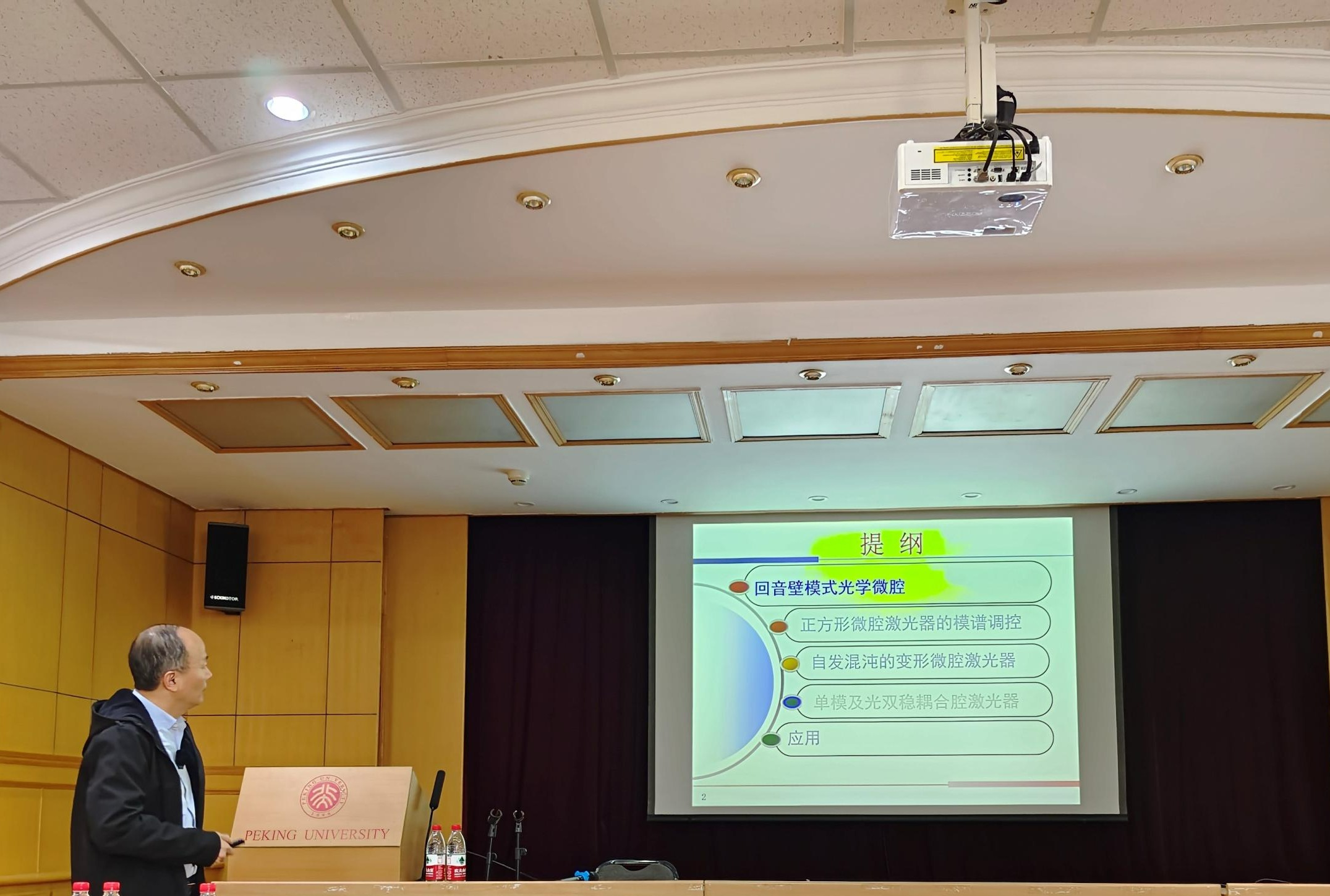
Huang started from the historical origin of the echo wall. The echo wall mode was proposed in 1910 by Lord Raleigh in his paper, which studied the echo wall problem in St. Paul's Church in London, and its principle is that sound waves can be constantly reflected in the curved and smooth wall with little loss, so the sound can travel along the wall for a long distance. The scattering of light from water droplets with dimensions larger than the wavelength is associated with a confined echo wall pattern in water, where the light can remain imprisoned within the boundary of a closed cavity to maintain a stable traveling wave transmission pattern. Extending the echo wall mode to the microcavity domain, it is the internal total reflection mode of the mode light at the interface. With the rapid development of silicon-based optoelectronics, silicon-based waveguide optical microcavities are characterized by high Q value, small mode size, low threshold, and easy integration. Microdisk as well as deformed microcavity lasers are not conducive to directional coupling output due to their rotational symmetry. To solve this problem, the symmetry can be broken by using a deformed cavity so that the light does not satisfy the total reflection condition at part of the boundary to achieve the output. The coupling output of conventional swift-wave coupled output microdisk lasers is very sensitive to the spacing. In contrast, for direct-connected waveguide echoplanar-mode microcavity lasers, the output of triangular, square, polygonal and circular waveguides can be used without swift-wave coupling.
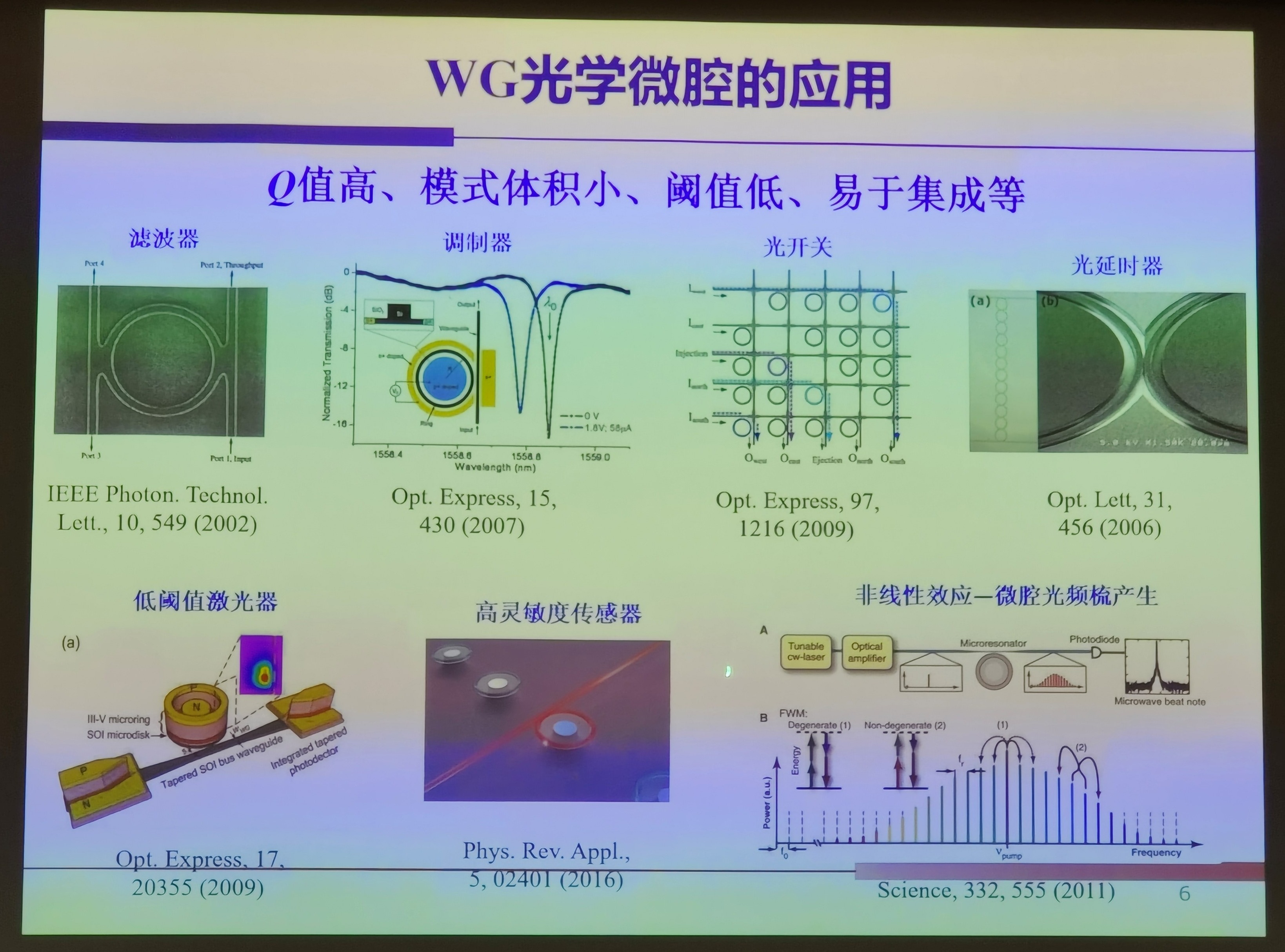
Then, Yongzhen Huang explained the basic principle of optical microcavity, starting from the basic square optical microcavity, whose modes can be expressed in the form of analytical solutions, and the field distribution in the microcavity can be found by the time-domain finite difference method to ensure that the difference between the two transverse wave vector components is small enough to achieve total reflection at the four interfaces, so that the light travels back and forth at the interface without escaping. The coupled modes are coupled to each other to change the field distribution and to adjust the mode loss, resulting in coupled modes with high quality factors. The light is output from the cavity by connecting the output straight waveguide in the region of strong field distribution.
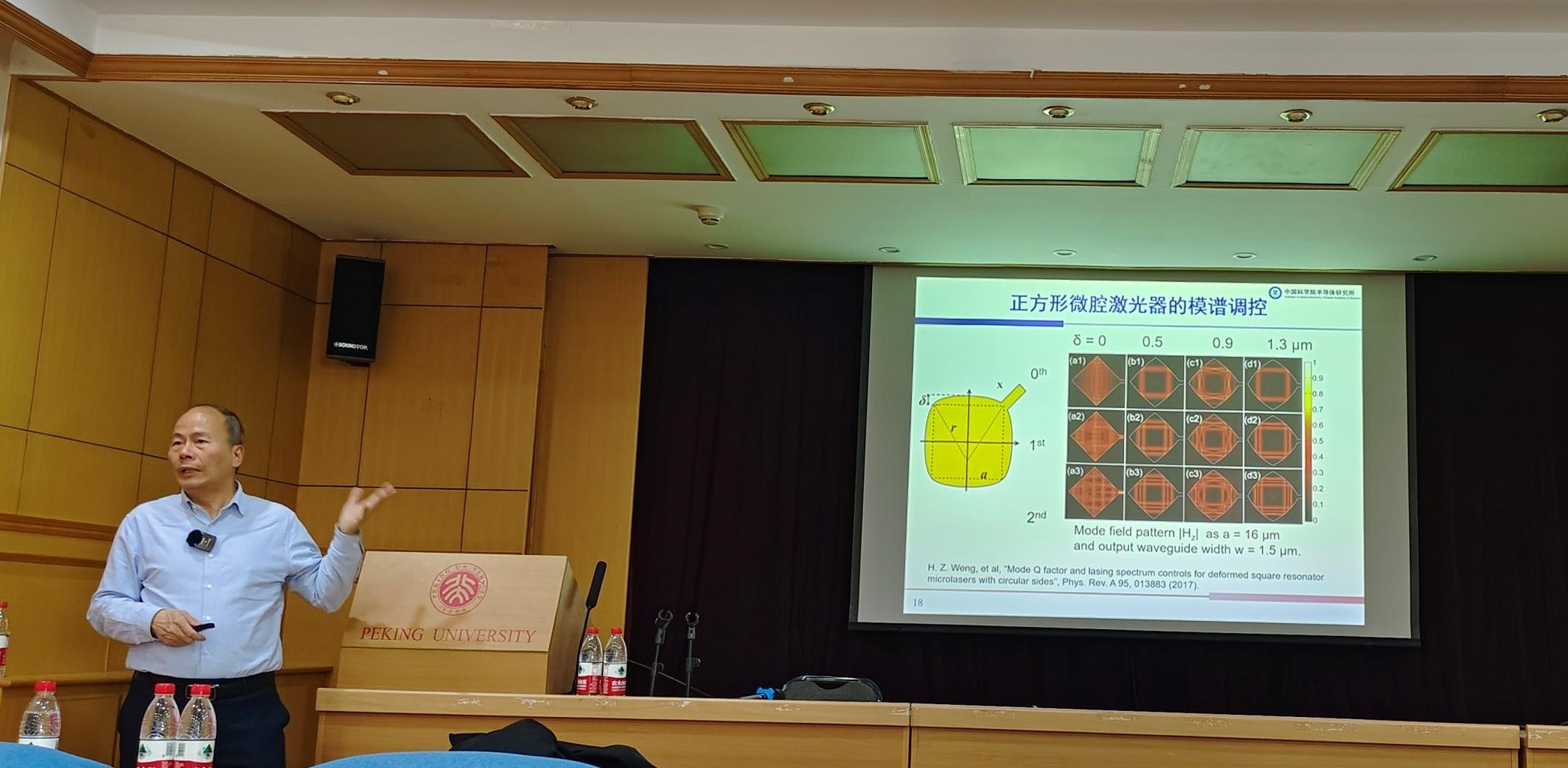
The mode of the square cavity is not affected by the output waveguide but changes the q value of the cavity, while the circular microcavity does not change the q value after adding the output waveguide, and its modes have the original modes coupled to each other to produce. Using directional cavities, a dual-mode square microcavity laser with tunable mode spacing is proposed, with wavelength spacing tuned from 0.18 nm to 0.1 nm and intensity ratio less than 4 dB. Unlike conventional FP cavities, which have high overlap of longitudinal and transverse mode orders and are difficult to achieve stable dual modes, the field distributions of adjacent fundamental transverse modes and first-order transverse modes of square microcavities are not the same for mode indices, satisfying the The condition of stable existence of dual mode. The introduction of curved deformation on one side of the square microcavity enables the output to be concentrated in the waveguide fundamental transverse mode. Compared with the conventional dual-mode laser of DBR or DFB, the proposed square microcavity laser has a simpler structure and the dual-mode wavelength spacing generated in the same resonant cavity is insensitive to environmental fluctuations.
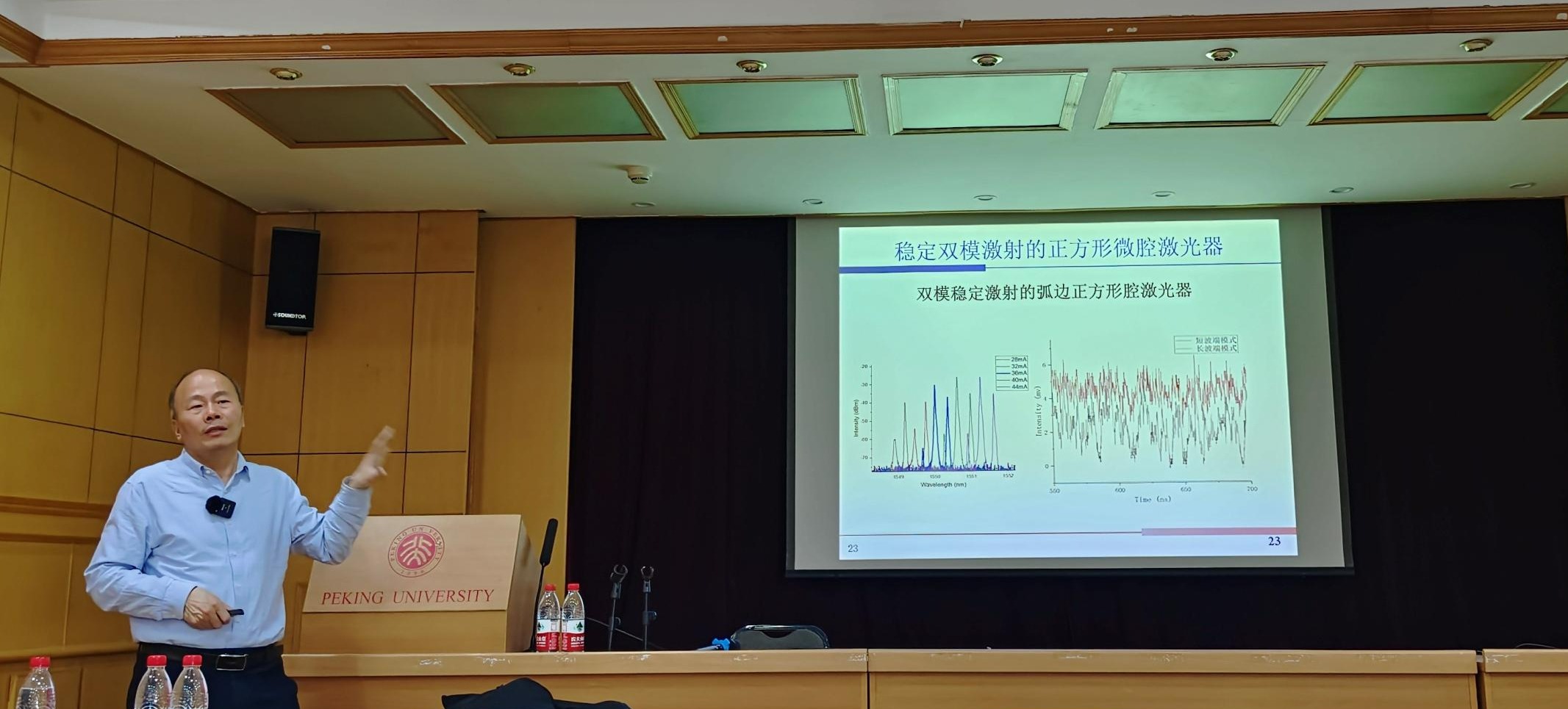
He talked about deformed microcavity lasers with spontaneous chaos. Chaotic lasers have important applications in random number generation, chaotic optical communication, and chaotic lidar. By performing dual-mode inter-injection into the microcavity and by analyzing the rate equation of carrier beat frequency oscillation, it can be found that the laser enters nonlinear states such as single-period, double-period, and chaos as the two mode intervals are changed. The design of mode interval tuning is realized by using ring electrodes, and the output spectrum becomes wider and wider as the input current increases and enters the chaotic state. Spontaneous chaotic bandwidth is also enhanced by three-mode optical-optical resonance, and random number extraction experiments are conducted to achieve AC data distribution with a sampling rate of 100G Sa/s and differential data distribution with 0.5ns. Yongzhen Huang explained the research work on coupled-cavity lasers. Coupled-cavity lasers utilize cavity coupling with different FSRs to achieve better mode selection, high power output, and wavelength tunability. To address the problem of unsatisfactory far-field mode effect of square microcavity laser, the square microcavity and FP cavity are combined together to realize the bistable output of FP cavity coupled cavity laser with tuning range greater than 33nm and edge-touch rejection ratio of 40dB to achieve 42-way DWDM output in C-band.
Finally, Research Professor Yongzhen Huang demonstrated the applications of microcavity lasers in optoelectronics, including photogenerated microwave, photogenerated THz, and optical frequency comb seed source. Based on a dual-pumped Brillouin loop and nonlinear fiber extension, a dual-mode microcavity is used as a seed source to realize octave optical combs using the four-wave mixing effect. An optical time-domain reflectometer is implemented using a chaotic microcavity laser. It can also be used as a light source for a two-port incident silicon-based all-optical processing chip, and can maintain good coherence of the two sources. Yongzhen Huang said that he will continue to work deeply in the direction of two-dimensional integrated square microcavity lasers in the future, and make continuous efforts to realize high-performance and large-scale integrated microcavity lasers.
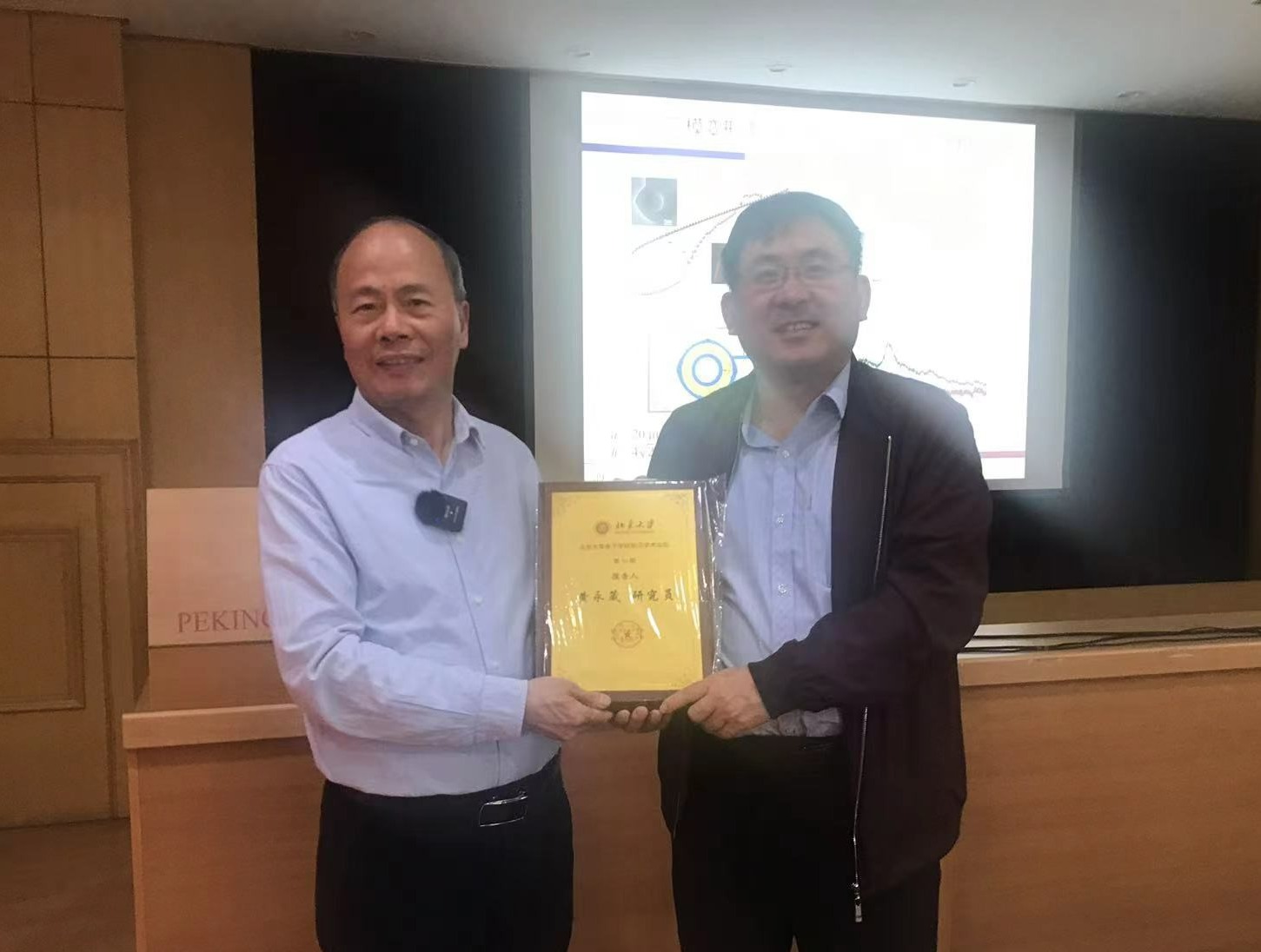
During the question and answer session, students and faculty listened to the presentation and had a full exchange of ideas with Yongzhen Huang. He expressed his views on several options of current chaotic laser light sources and compared the key performance parameters of chaotic light sources.
At the end of the presentation, Prof. Wang, the Associate Dean of the School, granted a commemorative plaque of the School Academic Frontier Forum to Yongzhen Huang.




